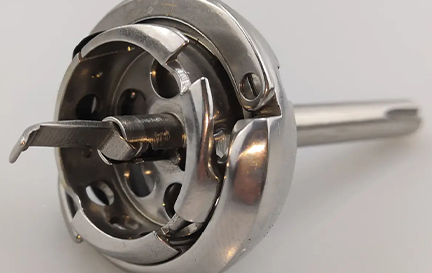Sewing Machines for Automotive Upholstery Projects and Custom Interior Designs in Your Vehicle
The Importance of Car Upholstery Sewing Machines in Automotive Interiors
Car upholstery sewing machines play a crucial role in the automotive industry, particularly in the production and maintenance of vehicle interiors. The aesthetic and functional qualities of a car's interior are often directly influenced by the craftsmanship of its upholstery, making reliable sewing machines an indispensable tool for automotive upholsterers. This article explores the various aspects of car upholstery sewing machines, their types, features, and the significance of skillful sewing in enhancing vehicle interiors.
The Role of Car Upholstery Sewing Machines
In the automotive sector, sewing machines are essential for creating and repairing upholstered components such as seats, door panels, headliners, and dashboards. These machines are specifically designed to handle heavy and thick materials like leather, vinyl, and other fabrics that are commonly used in car interiors. They facilitate precise stitching, ensuring durability and maintaining the aesthetic appeal of the vehicle.
Types of Car Upholstery Sewing Machines
There are several types of sewing machines used for car upholstery, each designed for specific tasks
1. Walking Foot Sewing Machines These machines are particularly popular for upholstery work as they feature a walking foot mechanism that allows for even feeding of multiple layers of fabric. This is crucial when working with thick materials that need to be stitched together seamlessly. 2. Industrial Sewing Machines Typically utilized in manufacturing settings, these machines are sturdy and efficient. They are designed to withstand prolonged use and can handle various types of fabric, making them perfect for large-scale production of car interiors.
3. Heavy-Duty Sewing Machines Similar to industrial machines, heavy-duty sewing machines are built for durability. They can sew through several layers of heavy material and are ideal for custom upholstery jobs that require strength and precision.
4. Specialized Upholstery Machines Some machines come with features tailored for specific tasks, such as stitching piping, embroidery, or applying decorative elements. These are vital for enhancing the overall look and feel of vehicle interiors.
car upholstery sewing machine

Key Features to Look For
When selecting a sewing machine for car upholstery, several features are essential. These include
- Power A powerful motor is critical for sewing through thick fabrics without skipping stitches. - Stitch Variety The ability to create different types of stitches, including zigzag and straight stitches, provides versatility in design. - Adjustable Presser Foot This feature helps in working with various fabric thicknesses, allowing for better control and quality of stitching. - Durable Build A well-constructed machine can withstand the rigors of upholstery work, ensuring longevity and reliability over time.
The Art of Upholstery
Beyond the functionality of sewing machines, skilled workmanship is paramount in car upholstery. An experienced upholsterer can transform a vehicle’s interior into a luxurious space that enhances comfort and style. They understand the nuances of fabric selection, color coordination, and design techniques that collectively contribute to the vehicle's overall appeal.
Moreover, good upholstery work not only beautifies a car’s interior but also extends the life of the vehicle by protecting its underlying structures from wear and tear. Quality stitching prevents fraying and damage, ensuring that the interior retains its new look for years to come.
Conclusion
In conclusion, car upholstery sewing machines are fundamental tools that significantly impact the automotive interior industry. Their ability to handle heavy materials, combined with the expertise of skilled upholsterers, culminates in the creation of beautiful and durable car interiors. As the automotive industry continues to evolve, the importance of high-quality upholstery work will remain paramount, underscoring the need for advanced sewing machines and skilled artisans. Investing in the right tools and training will ensure that vehicle interiors not only meet industry standards but also cater to the ever-increasing consumer demand for comfort and style in automotive design.
-
Leather Sewing Machine: The Industrial Standard for Tough MaterialsNewsJul.18,2025
-
Sail Making Machine: Heavy-Duty Stitching for Industrial and Marine NeedsNewsJul.18,2025
-
Sling Sewing Machine: The Backbone of Heavy-Duty FabricationNewsJul.18,2025
-
Leather Sewing Machine: Precision for Heavy-Duty StitchingNewsJul.18,2025
-
Big Bag Sewing Machine: Powering the Future of Bulk PackagingNewsJul.18,2025
-
FIBC Sewing Machine: Essential Equipment for Bulk Bag ProductionNewsJul.18,2025
-
Heavy Duty Leather Sewing Machine: A Must-Have for Professional LeatherworkNewsMay.28,2025





























